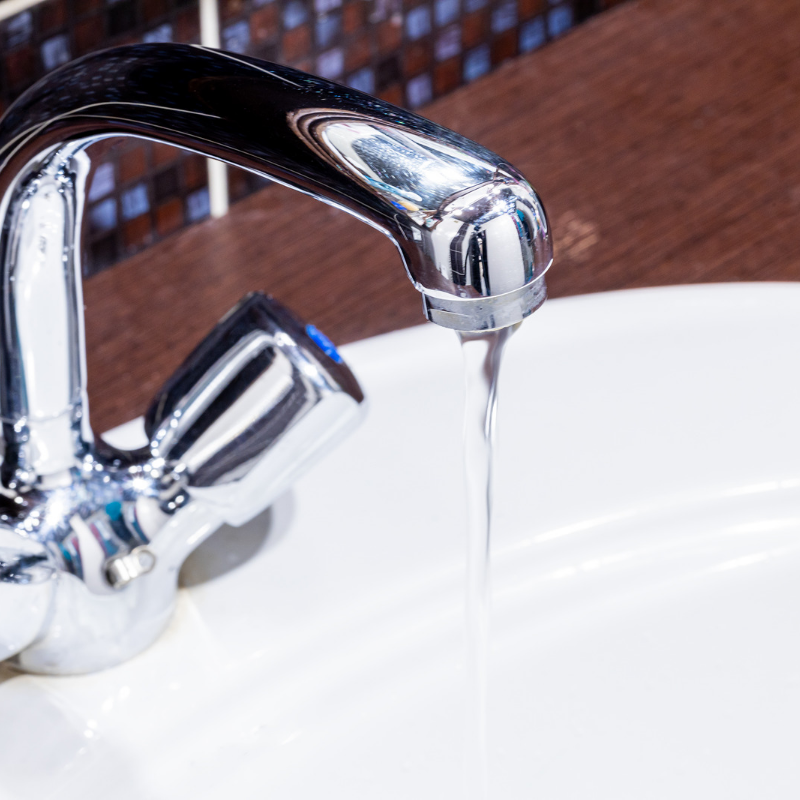Improve Your Home Water Pressure: 7 Secret Tips You Wish You Knew Sooner
Improve Your Home Water Pressure
Improving home water pressure is a common issue that many homeowners face. Low water pressure can be frustrating and inconvenient, especially when it comes to daily tasks like showering and doing dishes. Fortunately, there are several tips and tricks that can help improve water pressure in your home.
One of the most common causes of low water pressure is a clogged showerhead or faucet aerator. Over time, mineral deposits can build up and restrict the flow of water. Cleaning or replacing these fixtures can often improve water pressure. Another common cause of low water pressure is outdated plumbing. Older homes may have pipes that are too small or corroded, which can restrict water flow. Upgrading to newer, larger pipes can often solve this problem.
If you're struggling with low water pressure in your home, don't despair. With a little bit of know-how and some simple fixes, you can improve your water pressure and enjoy a more comfortable and convenient home. In the following article, we'll explore some secret tips and tricks that can help you boost your home's water pressure and make your daily routine a little bit easier.
Understanding Water Pressure
Water pressure is the force that pushes water through your pipes and out of your faucets. It is measured in pounds per square inch (psi). Understanding water pressure is essential to improving it.
Low water pressure can be caused by a variety of factors, including clogged pipes, old pipes, or a high demand for water in your area. It can also be caused by low pressure from your water supplier.
Flow rate, measured in gallons per minute (gpm), is another important factor to consider when improving water pressure. Flow rate is the amount of water that flows through your pipes in a given amount of time.
To determine the cause of low water pressure, it's important to first measure the pressure and flow rate in your home. This can be done using a pressure gauge and flow meter.
Once you have determined the cause of low water pressure, you can take steps to improve it. This may include cleaning or replacing clogged pipes, upgrading to larger pipes, or installing a water pressure booster.
It's important to note that increasing water pressure beyond a certain point can cause damage to your pipes and appliances. It's recommended to consult with a professional plumber before making any significant changes to your water pressure.
Common Causes of Low Water Pressure
Issues with the Municipal Water System
Sometimes, low water pressure can be caused by issues with the municipal water system. This may be due to maintenance work or repairs being carried out on the water lines. Additionally, if there is a high demand for water in your area, it can lead to low water pressure.
Plumbing System Problems
Another common cause of low water pressure is plumbing system problems. This can include clogged pipes, leaks, corrosion, and mineral deposits. Clogs and blockages can occur due to the buildup of sediment and debris in the pipes, while leaks can lead to a loss of water pressure.
Corrosion can also occur over time, causing the pipes to become narrower and restricting the flow of water. Mineral deposits can also accumulate in the pipes, reducing the amount of water that can flow through them.
Appliance-Specific Issues
Finally, low water pressure can also be caused by appliance-specific issues. For example, if you have a water softener, it may be clogged with salt or other debris, which can lead to low water pressure. Similarly, if you have a water filter, it may need to be replaced or cleaned to improve water flow.
In some cases, the problem may be with the appliance itself. For example, a faulty showerhead can reduce water pressure, or a faucet may be damaged or worn out, causing water to leak out and reducing the amount of water that can flow through the system.
Overall, there are several common causes of low water pressure, including issues with the municipal water system, plumbing system problems, and appliance-specific issues. By identifying and addressing these issues, you can improve the water pressure in your home and enjoy better water flow for all your daily needs.
Identifying Water Pressure Problems
If you're experiencing low water pressure in your home, it may be time to troubleshoot the issue. Here are a few tips to help you identify and fix water pressure problems.
Testing Your Water Pressure
The first step in identifying water pressure problems is to test your water pressure. To do this, you'll need a water pressure test gauge. Simply attach the gauge to an outdoor faucet and turn on the water. The gauge will give you a reading of your water pressure in pounds per square inch (PSI).
A PSI reading of 40-60 is considered normal for most homes. If your reading is below 40, you may have low water pressure.
Checking for Leaks
Leaks in your plumbing system can also cause low water pressure. To check for leaks, turn off all your water-using appliances and faucets, and then check your water meter. If the meter is still moving, you likely have a leak somewhere in your system.
You can also check for leaks by inspecting your pipes for visible signs of damage or corrosion. If you find any leaks or damage, it's important to have them repaired as soon as possible to prevent further damage and loss of water pressure.
Assessing Appliances
Finally, your water pressure may be affected by the appliances in your home. Some appliances, such as washing machines and dishwashers, require a certain amount of water pressure to function properly. If your water pressure is too low, these appliances may not work as well as they should.
To assess your appliances, check their user manuals for recommended water pressure levels. If your water pressure is below the recommended level, you may need to adjust your system or upgrade your appliances.
By testing your water pressure, checking for leaks, and assessing your appliances, you can identify and fix water pressure problems in your home. If you're unable to troubleshoot the issue on your own, it may be time to call in a professional plumber to help.
Professional Assistance
When it comes to improving your home's water pressure, sometimes it's best to call in a professional plumber. Here are some situations where it's recommended to seek professional assistance.
When to Call a Plumber
If you have tried the DIY methods and still have low water pressure, it's time to call in a professional plumber. Licensed plumbers have the knowledge and experience to diagnose the issue and provide a solution. Additionally, if you notice any of the following signs, it's recommended to contact a plumber:
- Sudden drop in water pressure
- Rusty or discolored water
- Leaking pipes
- Unpleasant smells coming from your pipes
- Water bills that are higher than usual
Choosing a Reliable Plumber
When choosing a professional plumber, it's important to do your research and select a licensed plumbing contractor. A licensed plumber has the required training and experience to handle any plumbing issue. Here are some tips to help you choose a reliable plumber:
- Check their license and insurance
- Read reviews and ask for references
- Get multiple quotes
- Ask about their experience with your specific issue
- Ensure they offer a warranty or guarantee on their work
In summary, while DIY methods may work for minor issues, it's best to seek professional assistance if you notice any signs of low water pressure or have tried DIY methods without success. When choosing a professional plumber, make sure to do your research and select a licensed plumbing contractor with experience in your specific issue.
DIY Solutions to Improve Water Pressure
Adjusting Your Pressure Reducing Valve
If your water pressure is low, you may need to adjust your pressure reducing valve (PRV). The PRV is usually located near the main water supply line into your home. To adjust it, follow these steps:
- Turn off the main water supply valve.
- Locate the PRV and remove the cover.
- Use an adjustable wrench to turn the adjustment screw clockwise to increase the pressure or counterclockwise to decrease it.
- Replace the cover and turn the main water supply valve back on.
Cleaning Clogged Pipes
Clogged pipes can also cause low water pressure. To clean them, you'll need a bucket, vinegar, and a garden hose. Follow these steps:
- Turn off the main water supply valve.
- Attach the garden hose to an outdoor faucet and turn on the water.
- Insert the other end of the hose into a bucket of vinegar.
- Turn on the faucet and let the vinegar run through the pipes for at least 30 minutes.
- Turn off the faucet and disconnect the hose.
- Turn the main water supply valve back on.
Replacing Old Showerheads
Old showerheads can also be a culprit of low water pressure. To replace them, you'll need a new showerhead, Teflon tape, and an adjustable wrench. Follow these steps:
- Turn off the water supply to the shower.
- Use the adjustable wrench to loosen and remove the old showerhead.
- Wrap Teflon tape around the threads of the shower arm.
- Screw on the new showerhead and tighten it with the adjustable wrench.
- Turn on the water supply to the shower.
By following these DIY solutions, you can improve your home water pressure without the need for professional help.
Advanced Solutions for Water Pressure Improvement
If you have tried all the basic solutions for improving your home's water pressure but still aren't satisfied, it may be time to consider some advanced solutions. Here are three options worth exploring:
Installing a Water Pressure Booster Pump
A water pressure booster pump is a device that increases the water pressure in your home's plumbing system. It is installed on the main water line and can provide a significant boost in pressure. Booster pumps come in different sizes and capacities, so it's important to choose one that is appropriate for your needs.
To install a water pressure booster pump, you will need to:
- Turn off the main water valve
- Cut the main water line and install the booster pump
- Connect the pump to a power source
- Turn on the main water valve and test the pressure
Keep in mind that installing a booster pump can be a complex job, so it's best to hire a professional plumber.
Replacing Your Pressure Reducing Valve
If your home has a pressure reducing valve (PRV), it may be the cause of your low water pressure. A PRV is a device that reduces the water pressure coming into your home from the main water line. If it is malfunctioning or outdated, it can reduce the water pressure too much.
To replace a PRV, you will need to:
- Turn off the main water valve
- Remove the old PRV and install the new one
- Turn on the main water valve and test the pressure
Replacing a PRV can be a challenging task, so it's best to hire a professional plumber.
Upgrading Your Well Pump
If your home gets its water from a well, upgrading your well pump can be an effective way to increase water pressure. A submersible pump is a type of well pump that is installed inside the well and pushes water up to the surface. If your current well pump is old or undersized, upgrading to a new submersible pump can improve water pressure.
To upgrade your well pump, you will need to:
- Turn off the power to the well pump
- Remove the old pump and install the new one
- Turn on the power and test the pressure
Upgrading a well pump can be a challenging and potentially dangerous task, so it's best to hire a professional well contractor.
Remember that these advanced solutions can be expensive and complex, so it's important to consider all your options before making a decision. Consult with a professional plumber or well contractor to determine the best solution for your home's water pressure needs.
Preventing Future Water Pressure Issues
Regular maintenance of your plumbing system, proper use of appliances, and addressing hard water issues are key to preventing future water pressure issues.
Regular Maintenance of Your Plumbing System
Regular maintenance of your plumbing system is essential to prevent water pressure issues. It is important to check for leaks and damaged pipes, especially if your home has copper or galvanized steel pipes. These types of pipes are prone to corrosion and can cause low water pressure.
In addition, it is important to check the water gauge and ensure that the water pressure is within the recommended range. High water pressure can cause damage to appliances and fixtures, as well as increase the risk of water leaks. Installing a water pressure reducing valve can help regulate the water pressure and prevent future issues.
Proper Use of Appliances
Proper use of appliances is also important for maintaining water pressure. It is important to follow the manufacturer's instructions for use and maintenance of appliances such as washing machines and dishwashers. Overuse of these appliances can cause strain on the plumbing system and lead to low water pressure.
Addressing Hard Water Issues
Hard water can also cause low water pressure. Minerals in the water can build up in the plumbing system and cause blockages. Installing a water softener can help prevent mineral buildup and improve water pressure.
In conclusion, regular maintenance, proper use of appliances, and addressing hard water issues are key to preventing future water pressure issues. By taking these steps, homeowners can ensure that their plumbing system is functioning properly and avoid costly repairs in the future.




